April showers bring May flowers
May 27, 2020
Spring has sprung, pollen has filled the air, and allergy season is among us: the nature around us is in full bloom. Arguably, flowers are one of the best parts of spring’s attributes. The fresh colors that arrive when things are just starting to bloom, are sure to capture your eye. Go outside thinking about flowers and you’ll be captured by an array of colors you’ve never noticed before. Some flowers you just may see in your backyard you are sure to appreciate, by just knowing what they are.
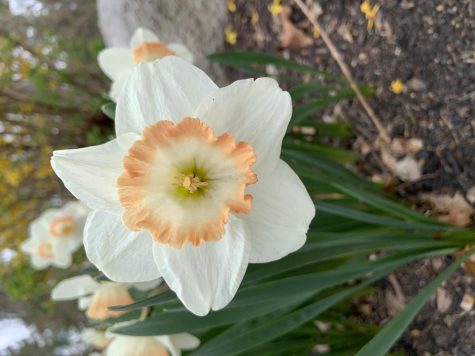
Daffodil
The Narcissus pseudonarcissus, known as the Daffodil, is known for its trumpet-like resemblance. “I also really enjoy New England daffodils. They remind me of the emergence of spring,” said flower enthusiast and Hollis resident Jennifer Palmer. There is a small range in color which includes, yellow, orange and white. Daffodils are carefree and will bloom almost anywhere. Best of all, daffodils multiply quickly and are able to return every spring. For this reason it is very likely on your walks around the neighborhood you will see a pops of yellow in people’s yards.
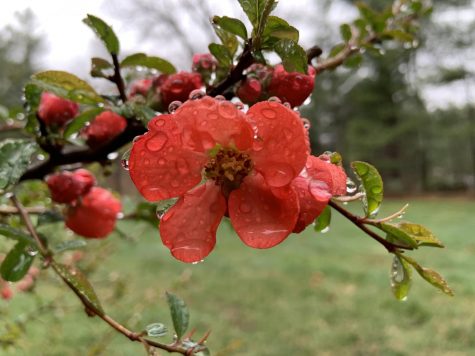
Crab Apple Blossoms
Crab apple blossoms form on bushes and trees and can be found all throughout New Hampshire, because of the color and foliage, they are a New England favorite. The botanical name being Malus floribunda, where Malus means “apple” in Latin, the blossoms are beautiful and fragrant. With colors ranging from light pink to dark red, these flowers are sure to capture your eye.
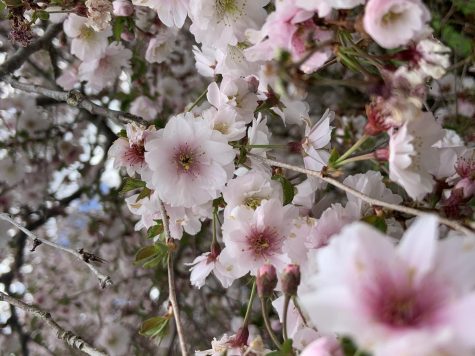
Cherry Blossoms
During the spring, the Prunus serrulata, also known as the cherry blossom tree explodes into pretty pink clouds consisting of flowers. Although the color variety is small the tree does not go unappreciated. “I like cherry blossoms because they are pretty, with the little hint of pink towards the center,” said senior Maddie Richardson ‘20. In Japan cherry blossoms symbolize renewal, which is why every year all across the world different countries hold cherry blossom festivals, including our very own Boston, Massachusetts. While the trees nab all the attention, the blossom petals are edible and used in a variety of teas and sweets.
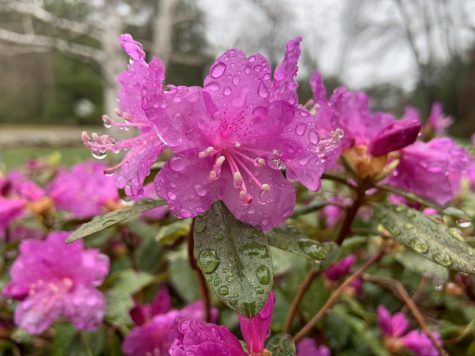
Azaleas
Spring brings flowers, and it wouldn’t be a New England spring without azaleas allocated as Rhododendrons. Neighborhoods all across Hollis and Brookline hold these flowering perennial shrubs. “One of my favorite New Hampshire flowers are roseshell azaleas. They are one of the hardiest species of the United States that grows in the region from Virginia north to Vermont. They are very abundant in southern New Hampshire and are often found near open woods near a swamp, river, or a pond,” said Jennifer Palmer. There are around twelve different types of azaleas, and the most popular bush you’ll see around the HB neighborhoods consist of the magenta blooms classified as the ‘Encore Autumn Amethyst’. However there is quite the variety in color ranging from, purple, to white, to red, and yellow, these are a diverse group of flowers.
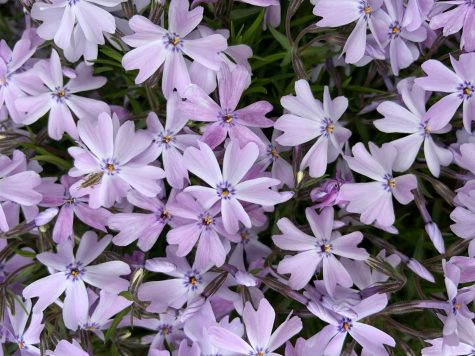
Sweet William Catchfly
Although the name isn’t so graceful this flower resembles a simple yet elegant bloom spread around low to the ground in bunches across people’s garden beds. The botanic name for these petite flowers are Silene armeria. This isn’t a flower as popular as the previously mentioned however the color, heart-shaped petals, and the different pink petals are sure to capture your eyes. Sweet William Catchfly has a variety of colors ranging from rose pink, to white.“The plant flowers from May to September and comes primarily in tones of pink but may also be in white and lavender. The plant’s extended blooming period makes growing Silene armeria ideal for any landscape. Catchfly perennials are low-growing plants with exceptional drought tolerance,” said Bonnie L. Grant a certified urban agriculturist.
Now that you have hopefully learned a little bit more about different types of flowers, both perennials and wild flowers around New Hampshire. Hopefully the next time you’re on a walk, even just a quick stroll around the neighborhood you’re out being your own little botanist identifying the different types of flowers. There is such a variety blooming, and with doing a little research you could find the petals are edible, (be sure of this before you go out eating flowers). Even without edible flowers this is a great time of year to go make a bouquet for yourself or someone special, or even press flowers you can find in your own backyard, there’s so much you can do with the beautiful blooms of spring.













